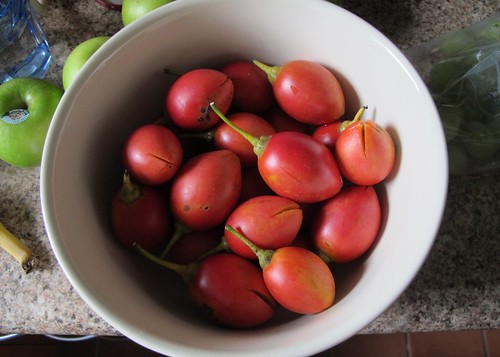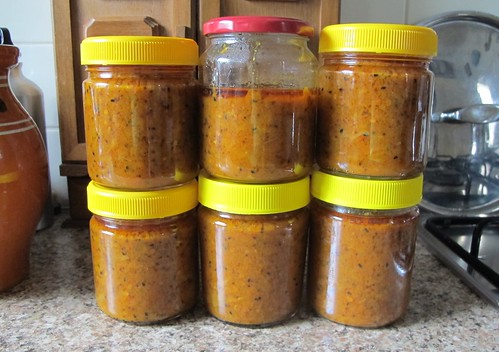and some other things.
I’ve had a lovely time the last three days, working on making things out of quince for the first time.
Back in June I bought some quinces. I’d been thinking on things that could be used to give character to cider made from boring commercial juice. I got all excited when I thought of quinces! They are in the same botanical family as apples. I’m not alone in this thought. At least one of the Tasmanian cider houses makes a cider partly from quinces. So given we were just past quince season, I thought I’d see if I could still get some. Yes! I bought 4 crazy knobbly yellow quinces. Roughly peeled cored and chopped, rested in water until all were done. Gave 1.5kg (admittedly wetted) quince flesh. I put that in a bag in the freezer to begin the juice process.
Then two days ago I took them out of the freezer, let them defrost a little on their own until the pieces could be broken apart. Put them into the slow cooker, added ~100g sugar (the last of the dextrose I had), a kettle of boiling water and a litre of cold. Left this cooking on slow for 10 hours. Yellow fruit flesh turned pink.


I’d never cooked quinces before. I was a bit surprised that they taste and smell so marmelady. After musing on that flavour for an hour or so I decided to add a bit of honey. Then added pectinase for juice extraction and clarity. Also a camden tablet to sterilise. Keep it warm 24hrs, then filter through a bag to extract the juice. Combine with commercial apple juice and pitch some yeast to make a cider

After juice extraction, I was left with about 500ml of pink quince pulp, less than a quarter of the original fruit volume.

What to do with it? Chutney I concluded. I decided to try to keep the pink colour though. I had fun coming up with a recipe I thought might manage that, and keep the flavour to the elegant, floral side of things. This is what I came up with:
500g quince pulp
6 granny smith apples and one pear, grated (~1.2kg)
~120g strawberries, chopped.
2 handfuls currants
white peach pulp, dried (was from 1kg fruit, used to make cider previously)
500g white sugar
500ml white wine vinegar
1t pink peppercorns (picked locally), coarsely ground with a mortar and pestle
Seeds from 6 green cardamom pods, a bit bashed
1t powdered ginger (because I have way too much in the house)
1/4t rose water
One cassia stick
One whole star anise
Split vanilla pod used twice before
Apple and quince juice from the cider density sample
The spices looking pretty before addition:

The mixture before cooking:

Bring the lot to a simmer. There was not a lot of liquid, so I cooked it for half an hour or so with the lid on, then with the lid off for maybe an hour? Until one can expose the bottom of the pan briefly by dragging the spoon through. Turn off the heat and rest for 10 min, then bottle to sterilised jars

Yay, it stayed pink! Here’s hoping it tastes good too in a month or so after it’s had time to mellow. As is traditional in my kitchen, some of the mostly exhausted spices are doing last duty in stewed fruit for breakfasts. This is 4 large pears, half a punnet of strawberries, about a dessert spoon of sugar, half a glass of white wine and the vanilla and cassia from above.





























